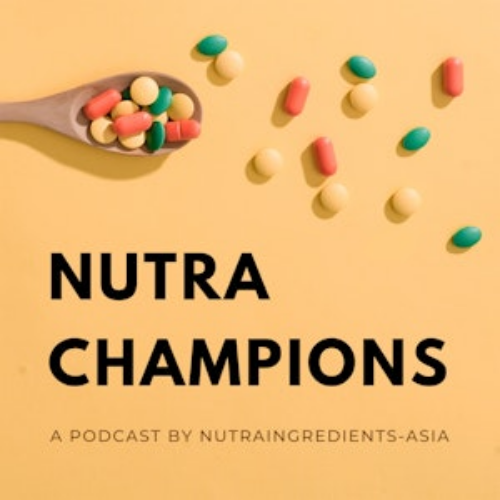Paraprobiotics-rich tempeh shows promise as vegan protein source for athletes and application in functional foods – review

Muscle synthesis and recovery are crucial to improve sports performance, and protein is one of the most consumed nutrients by athletes to stimulate muscle growth and repair.
Although sports nutrition foods are still dominated by animal-based ingredients, such as meat, eggs and milk, there has been a growing demand for plant-based alternatives due to environmental concerns and health problems such as deficiency in digesting lactose.
Plant-based protein can be obtained from tempeh, a fermented soybean product originated from Indonesia. It contains amino acids including methionine, threonine, valine, leucine, phenylalanine and isoleucine that have been found to help muscle growth.
To evaluate the potential effect of tempeh on sports performance, researchers from Indonesia and Italy conducted a review of published literature and recent findings.
“One of the abundant amino acids in tempeh is L-arginine, which is beneficial for reducing fat formation in the body. Notably, a recent systematic review and meta-analysis showed that L-arginine supplementation can enhance anaerobic (breakdown of glucose without using oxygen) performance in athletes,” the authors wrote.
Tempeh is made via fermentation using beneficial microorganisms such as enzyme-secreting mould and lactic acid bacteria. It is usually consumed after first being cooked, with the heat causing the probiotics to become inactive (paraprobiotics).
Although paraprobiotics are inactivated bacteria, a number of studies have established that they play an important role in the gastrointestinal microbiota ecosystem and immune system, reducing oxidative stress and fatigue, and increasing muscle mass in different pathways.
For instance, the paraprobiotics in tempeh can induce gene expression in the Immunoglobulin A (IgA) gene, an antibody that defences against antigens in the mucosal membrane.
“The close relationship between immunity and fatigue may be the cause of increased susceptibility to viral infections, especially since high-intensity exercise (HIE) can increase the risk of upper respiratory tract infections (URTIs),” said the authors.
For athletes, increased fatigue and reduced immunity are serious problems.
Some studies have shown that the concentration of salivary secretory IgA and natural killer cells decreased after prolonged HIE, and that paraprobiotics can help activate plasmacytoid dendritic cells (pDCs), a pivotal member of the immune system.
A study also showed that daily consumption of 100g of steamed tempeh for 16 days boosted IgA production and Akkermansia muciniphila (A. muciniphila) levels, which can improve type 2 diabetes and obesity. It is reported that the increase in A. muciniphila resulted from polyphenol compounds contained in tempeh.
Other benefits of paraprobiotics
In addition, the researchers said that paraprobiotics can be used to replace probiotics, which face drawbacks such as stability in production and difficulties with storage.
Findings have suggested that paraprobiotics prevent down-regulation associated with the oxidative phosphorylation gene, contributing to the maintenance of mitochondrial function and recovery from fatigue.
In a study, resistance exercise was shown to cause muscle damage, as evidenced by increased creatine kinase (CK) levels, muscle soreness, and reduced muscle strength.
The study compared the effectiveness of post-exercise protein intake between whey, placebo, and a tempeh drink.
“The results revealed that the consumption of a tempeh drink post-exercise lowered CK levels more than the placebo group. It was also found to improve muscle strength and muscle soreness 24 hours after exercise.
“Moreover, tempeh is characterised by high antioxidant activity that is important for reducing oxidative stress and enhancing performance. Therefore, it has significant potential for use in a sports drink to reduce CK levels, improve muscle strength, and reduce muscle soreness after resistance exercise,” the authors reiterated.
Myriad application possibilities
While soybeans are widely used, other legumes like corn, red beans, green beans and black beans can also be utilised as a substrate for tempeh.
Apart from its positive impact on health, the accessibility, affordability and versatility of tempeh make it a strong candidate for application in functional foods.
One example of a tempeh-based product is tempeh flour. A previous study highlighted that the combination of tempeh flour and eel produces beneficial effects on nutritional status biomarkers.
Furthermore, tempeh flour can be mixed with other ingredients that are rich in proteins or carbohydrates to create snack bars as a healthy snacking alternative.
“Besides being a food ingredient, tempeh can be consumed in the form of drinks, such as tempeh milk, and can come in a variety of flavours like chocolate, vanilla and strawberry.
“We hope our paper will encourage further research on tempeh because there are still many potential aspects that can be explored, especially in the fields of microbiomes and transcriptomics. Specifically, a proteomic study that examines the muscle synthesis and mitochondria biogenesis activities of paraprobiotics in tempeh as a sports food is needed.”
Source: Nutrients
https://doi.org/10.3390/nu15112599
“Soy-Based Tempeh Rich in Paraprobiotics Properties as Functional Sports Food: More Than a Protein Source”
Authors: Dionysius Subali, et al



















